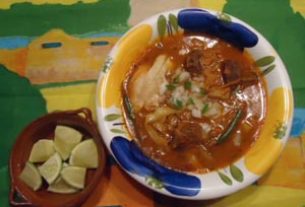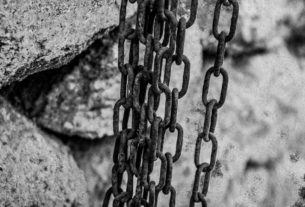– an excerpt from the book: “Agave Marias – border crossers, boundary breakers.” by various authors.
My reprobate pilot is a doctor. His own health problems prompted early retirement to Mexico. When he couldn’t pass a health exam for a new flying license, he changed a 3 to an 8 on the expiration date of his old one and flew down from Seattle.
Most generous with his gringo friends, Doc shares his medical expertise, his Jaguar, his Harley and now his Cessna. This is my first flight in a small plane and I’m excited. Our plans are simple. Two hours round trip to the coastal beach, a swim and picnic lunch. We should be back in the afternoon.
Once were airborne out of Guadalajara, Doc asks me to get out the chart from the door pocket but I can only find a road map and tell him so.
“Well, see if there’s another one in that compartment,” he snaps.
“Sorry, Doc, nothing but the road map.”
“No problem, that’ll be fine for this short run. I probably left the chart in the Jag.”
The unfurling scenes below fascinate me, a huge water tank, a dam, a big highway interchange. A barranca slices through jagged mountains. The engine sounds powerful and throaty. Doc brings the nose up to gain altitude and the plane almost tickles the treetops as we clear the summit. A two-lane highway snakes far below. Then it’s downhill to sea level and the long sweep of bay with its lapping shore.
We do a turn over the ocean shore and head into the salty wind, preparing to land. The abandoned, overgrown airstrip, discovered by camping friends, is now used for trucks hauling sand.
Touching down is easy. We taxi and park perpendicular to the truck lane. Low-growing thorn brush pushes through the broken concrete.
Doc turns off the engine. As we unfasten our safety belts and open the doors we hear a sound like the hiss of a viper. The right tire is going flat fast. The pretty blue and white Cessna settles lopsided on the isolated Mexican landing strip.
Although a little discouraged, I manage a brightness in my voice. “OK, Doc, we can fix this in no time. Lets get out the tools and change it.”
Doc, his voice low and controlled, says, “We have no tools, no spare, no nothing.”
“Oh, Doc, you’re kidding, of course.”
“The hell I am,” he says in his practiced calm hospital tone.
Doc locks the plane and we begin hiking on the hard sand of the truck trail, I in shorts and sneakers, Doc in shorts and flip-flops. After about 100 meters Doc is bright red, breathing heavily, favoring one leg.
“I’m sorry,” he says, “you’ll have to walk more slowly. I can’t keep up.”
“That’s alright, Doc, don’t worry. I can make better time if you stay with the plane. I’ll go for help and be back before you know it. The picnic lunch should keep you comfortable. And there are some cold beers in the ice chest.”
I begin fast-walking, water bottle and emergency cash in my backpack.
“Don’t forget, we need a Phillips head screwdriver,” he calls after me. I wave.
Where in the devil are those trucks, I wonder. Maybe one would have tools. I could hitch a ride. It seems I’ve come a long way, over an hour now, and not a single person.
The sweatband under my hat brim is soaking when I see the thatched roof of a little puesto. A Coca-Cola sign hangs crookedly from a supporting pole. Oyster shells and coconut husks litter the ground. A small brown-skinned boy in ragged shorts swings in a hammock. An older boy sits on a fallen palm trunk cleaning fish on a stump. I must be a strange sight to them. The older boy lops off the top of a coconut with a machete, punctures an eye, and offers it to me. The clear water, fresh and cool in its thick insulated husk, is refreshing.
As I drink I explain our plight. His long-lashed eyes grow bigger and bigger. He doesn’t believe me! Only a plane running dope would land on that God-forsaken strip. And that would be at night.
A vehicle rattles toward us over a sand trail and the boy says, “Acá viene José,” and sure enough, there is my “green angel” in the most beat-up, broken-down, used-to-be-green pickup that ever was. The young driver wears a rolled bandana around heavy black hair. He greets me with an engaging smile as he unloads cases of refrescos. His dark eyes brighten with interest when I tell him about the plane. Can he help?
“Creo que sí,” he says and proudly shows me a meager tool box which surprisingly includes the needed Phillips head screwdriver but no tire patching stuff. “Vámonos,” he says, and we climb into the pickup. I perch on the seat, avoiding protruding springs. With a lurch and grinding gears, we head back to the plane.
Doc is sitting in the shade of the wing, propped against the wheel reading a paperback. Empty beer bottles lie by his side. Smoke curls from his cigarette. He looks comfortable. Smiling, he shakes hands with José.
I tell him that well have to take the tire inland to get it patched. He frowns. There’s no jack, but Jose easily levers the landing gear with driftwood. Doc jams a rock underneath. The tire clears by an inch. José removes the wheel and tosses it into the back of the pickup.
“How far is the village?” I ask, as he fiddles with the pickup’s motor to get it started. He thinks a moment, ” Oh, más o menos 10 kilómetros.”
“Don’t worry,” I tell Doc, “I trust him. The plane’s safer with you here. Everything will be fine. We’ll still have time for a swim.”
He brightens. “I’ll drink to that,” he says, raising a beer bottle.
The village is a sandy, gray conglomerate of thatched huts and dilapidated cement structures, a few tiny stores. We pull up to a shack with a propped-up tire that says ” Llantera” in big white letters. The door is padlocked! The llantero has gone to Melaque.
With flagging spirits I realize swimming is – we’ll be lucky to get back to Guadalajara. José says the next village is some 12 kilometers. We rumble on, stopping at a stream to put water in the steaming radiator.
With the indicator on zero, I’m afraid to ask if there’s enough gas in the tank for all this traveling. I add up the distance. It’ll be 45 kilometers round trip.
Pedro, the llantero in the next village, lives by the river, and for good reason I learn. As he pulls spines out of the little tire, he explains that pressure, 15 minutes per patch, is necessary. I add up the minutes.
After patching four obvious leaks in the tube, all of us, including his numerous curious family, pick our way down to the river around rocks and debris. Pedro kicks off his huaraches, wades in, and submerges the tube. Tiny bubbles rise. More leaks! After several more trips to the river, the tire is fixed. Ten patches in all! A shotgun couldn’t have done a better job!
If we can take off by 5:30 we can make it back to Guadalajara before dark. My mind refuses to consider the problems of an overnight in the tight two-seater.
Doc, relieved to see us, has already stowed the picnic basket and gear. Mounting the wheel is quick. Realizing that help doesn’t come free, Doc whispers to me, “I have no money, I didn’t expect to spend any.”
I think, Christ, Doc, didn’t you prepare for anything? Aloud I say, “Well, thank God for my mad money.” I pay the small amount Jose asks plus a fat tip and a warm handshake.
Soon are circling low over the ocean, then over the airstrip where Jose is waving adios. I look at my watch, 5:30 on the nose. We should be in Guadalajara in an hour.
The mesmerizing cadence of the engine is comforting but then an adrenalin-making thought occurs to me. Ostensibly only the right tire was punctured. What about the left? Is there a possibility of a slow leak, a spine imbedded in it? “Doc, what would happen if we landed on a flat tire?”
“Oh, we’d go into a ground loop, probably be a fire.”
Great, just great, I think!
It’s almost 6:30 and I haven’t recognized any landmarks. When I mention this to Doc, he says calmly, “That’s because were lost!”
What he says next really chills me. “I’ve used up so much gas trying to find that fucking interchange, I don’t think we have enough to get back. I’m going to land on that highway down there,” Then, in his best we’re-not-going-to-die voice, he says, “Do’t worry. Highways make excellent emergency runways. Someone will come by and give us a hand.”
“No, no, Doc! You just don’t know Mexico! It doesn’t happen like that.” Calamity and collision fill my mind. “Don’t do it! Look over there.” I point out the right window at a long narrow piece of land running diagonally to cane fields. “That looks smooth. Please! Fly in close and take a look.” He banks the plane for a look-see.
It’s a level, hard gravel strip. Of course! For crop dusters. Great! Aviation fuel will be available. We land easily and taxi to a stop. Field machines are leaving for the day. After locking the cockpit, we hitch a ride on a red tractor into the nearby town of El Grullo. There’s a whole mountain range between here and where we should be! So much for Doc’s road map.
The tractor driver says there is no aviation fuel except in season. And this isn’t the season. Farther into town people stare and point at us, two foreigners perched on either side of the big tractor. At the plaza we thank the driver and jump down.
I haven’t eaten all day and tacos would taste very, very good. Having eaten all the picnic lunch, Doc isn’t hungry. He prefers drinking beer.
The fresh onshore breeze is gone, the hot evening air moist and heavy. There’s dankness all around and only one hotel in town. Through the thin wall separating our rooms I can hear Doc snoring as I ponder alternatives for tomorrow. I drift off into an exhausted sleep, lulled by the hum of a ceiling fan and rain on the tiled roof.
In early morning, broom people are busy sweeping the plaza where we sit on an iron-strapped bench. A shower, comb and lipstick have made me feel almost normal, but Doc, with stubby beard and red, watery eyes, looks like hell. I think he must have left his head back in Seattle when he retired. According to the manual, he says, Pemex Extra, gas for cars, will work in the Cessna’s Lycoming engine. Of course, I’m the one who has to hike to the gasolinera we saw at the edge of town.
Many tractors are lined up at the run-down gas station. There is no Pemex Extra, nor fuel cans or funnels. Nothing. I return to the plaza where Doc is dozing. Just over his shoulder I see the police station and an idea germinates. I’ll ask the police to help.
The sergeant, who has just pulled up in a Datsun pickup, is fascinated by my story. Certainly he’ll help. He’s a big man and I feel squashed as we sit three across in the small cab and head to another gasolinera. “It’s brand new, good thing you didn’t fuel up at that other station. That gas is filthy!”
The new gasolinera has funnel and cans. When we return to the plane the sergeant hoists me up so that I can pour the fuel in the wing tanks. I weigh the least and must crawl carefully, mindful of the seams of the lightly built, wing-over plane. Three trips in all.
Doc decides its more than enough to get us back to Guad. The very last of my emergency money pays for the gas and a small tip for the sergeant.
Back in the sky, the engine thrums happily, not missing a beat. This time I monitor the instruments and check the map as though my life depends on it. Indeed it may. But this time were going to make it! The airport is dead ahead.
Doc radios for landing instructions. The control tower tells him to park by the administration building instead of his usual tie-down spot. He does. Two stern-faced officials approach, their eyes masked by dark glasses. They say there were six planes out searching for us because Doc failed to file a flight plan. His plane is impounded until he pays a sizable fine.
Serves him right, I think. Would I fly with him again? Hell no, but I might try his Jag or Harley.
Agave Marias is available from Amazon Books: Paperback
Mexconnect features full-length excerpts from the book Agave Marias – border crossers, boundary breakers.
- First Flight by Gloria Marthai
- The Virgin Dialogue by Judy Dykstra-Brown
- The Wedding by Gloria Marthai
- Going for a Mexican Ride by dory jones
- Maid in Mexico by Harriet Hart
- Three Señoras Named Lola by Gloria Marthai
- The Lady Is a Tramp by Nina Discombe
- The Delivery by Harriet Hart



